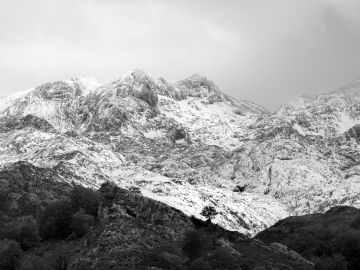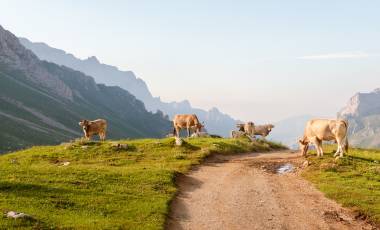Absolutely, the Picos de Europa is definitely worth visiting if you enjoy outdoor activities and stunning natural landscapes. The range offers some of the most spectacular scenery in Spain, with dramatic limestone peaks, lush green valleys, and crystal-clear rivers. Whether you’re into hiking, climbing, or simply soaking in the views, there’s something for everyone.
The region also has charming villages where you can experience local culture and cuisine, including delicious cheeses and traditional dishes. The area’s diverse trails cater to all levels of hikers, from leisurely walks to challenging climbs. Plus, the Picos de Europa is relatively less crowded compared to some other European mountain ranges, offering a more tranquil experience.
Our Picos de Europa tour is an 8-day guided trek, taking you through limestone peaks and lush valleys, summiting mountains to gaze over the oldest national park in the country. It’s an expertly designed itinerary that immerses you into this gorgeous region.
Spring, from April to June, is a wonderful period to explore the region. During this time, the weather starts to warm up, and the landscapes are lush with blooming wildflowers. The trails are less crowded, allowing for a more serene hiking experience. However, higher elevations might still have some snow, so be prepared for potentially variable conditions.
Summer, from July to September, is another excellent time to visit. The weather is typically stable, with longer daylight hours perfect for hiking and exploring. This season offers the most accessibility to trails and outdoor activities. However, it’s also the peak tourist season, so popular trails and accommodations might be busier. For those who enjoy milder weather and fewer crowds, late spring and early autumn can provide a more tranquil experience while still offering favorable conditions for outdoor adventures.
Yes, people do live in the Picos de Europa, though the population is relatively sparse due to the rugged and remote nature of the region. The area is home to several small villages and towns nestled within the valleys and lower slopes of the mountains. These communities, such as Cangas de Onís, Potes, and Arenas de Cabrales, have a long history and are integral to the local culture and economy. The presence of these communities adds a rich cultural layer to the natural beauty of the Picos de Europa, making the region not only a destination for outdoor activities but also a place to experience local traditions and way of life.
Spanish is the primary language in the region.





